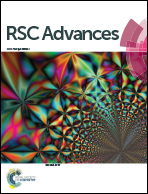Nano-silica extracted from rice husk and its application in acetic acid steam reforming
Abstract
Nano-silica extracted from rice husk and its application in acetic acid steam reforming was studied in the paper. A simple and efficient heat treatment method was used to extract high specific surface area silica from rice husk. It was found that the acid leaching process was beneficial for the removal of metal impurities and the decomposition of organic substances. The carbon residue decreased and sample purity increased with increasing temperature. At 600 °C, silica with the yield of 21.7% and the purity of 99.45% was obtained. The specific surface area was as high as 335 m2 g−1, and the corresponding average pore diameter was 4.95 nm. Nano-silica extracted from rice husk was applied as a support in the preparation of an acetic acid steam reforming catalyst (Ni/RH-SiO2). Ni/RH-SiO2 showed a better performance than Ni/SiO2, which may be due to the higher interaction between Ni and SiO2 in Ni/RH-SiO2. When the reforming temperature was 700 °C, carbon conversion of 95.3% and H2 yield of 2.38 mol mol−1 were obtained. Carbon deposition was found after a 6 h test, mainly in the form of filamentous carbon. The carbon deposition amount of spent-Ni/RH-SiO2 was lower than that of spent-Ni/SiO2.



 Please wait while we load your content...
Please wait while we load your content...